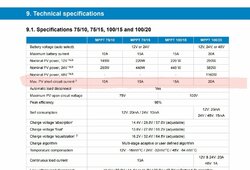moonlight23
New Member
- Joined
- Aug 8, 2022
- Messages
- 47
I’m building a portable DIY power station with 8S LiFePO4 batteries (24v), with a Victron 100V/15A MPPT solar charge controller inside to charge the batteries.
However I also want the option to charge this battery pack from the AC wall outlet. Can I wire both the solar panels and THIS 120v AC to 48v DC rectifier power supply into the PV input of the Victron? This would mean that if solar panels are not connected, the MPPT would still have a supply of 48v DC fed into it to charge the batteries from the wall.
That power supply linked is only rated for 4A (I’m ok with the slower charging speeds), however I’m a little concerned it’s not actually current-limited, so if the MPPT wants to pulls more than 4A then it could fry both the power supply and MPPT.
However I also want the option to charge this battery pack from the AC wall outlet. Can I wire both the solar panels and THIS 120v AC to 48v DC rectifier power supply into the PV input of the Victron? This would mean that if solar panels are not connected, the MPPT would still have a supply of 48v DC fed into it to charge the batteries from the wall.
That power supply linked is only rated for 4A (I’m ok with the slower charging speeds), however I’m a little concerned it’s not actually current-limited, so if the MPPT wants to pulls more than 4A then it could fry both the power supply and MPPT.





